Is it a grass or a sedge?
A very common grass to see when driving in southern Illinois is Broomsedge, Andropogon virginicus. It is often found in fields and along roadsides, in relatively disturbed areas. It is a native grass and can be found in the southern half of Illinois. Despite its name, Broomsedge is not a sedge. Sedges are another group of grass-like plants that are often confused with grasses. Many of them have triangular stems, whereas grass stems are generally round. Even though Broomsedge has the word sedge in its name, it is a grass, not a sedge.
How to identify in the summer
Look for a dense bunchgrass with lots of leaves along its flattened stems. There are often hairs along the leaves, especially near their bases, as well as a membranous ligule.
Since this is a warm-season grass, in late summer and early fall it produces a raceme inflorescence with small collections of spikelets (flowering units) covered in white fluffy hairs. These collections of spikelets resemble eyelashes.
How to identify in the winter
Broomsedge turns a golden-orange color in the fall. Unlike many grasses that turn a drab straw-colored yellow for the entire winter, Broomsedge keeps its orange color. That combined with its growth habit, which is a tight bunch, make this grass very distinctive and easy to pick out. Broomsedge often has lots of leaves, giving it a bush-like appearance.
Telling it apart from other grasses
While there are a few other species of Broomsedge grasses in Illinois, this one is by far the most common. The grass that is oftentimes confused most with Broomsedge is Little Bluestem. In general, Little Bluestem will be less bushy and leafy, with more delicate stems and smaller collections of fluffy spikelets. It is often found in higher quality habitats than Broomsedge.
Need a refresher on grass identification terms, like ligule and spikelet? Check out this blog post!

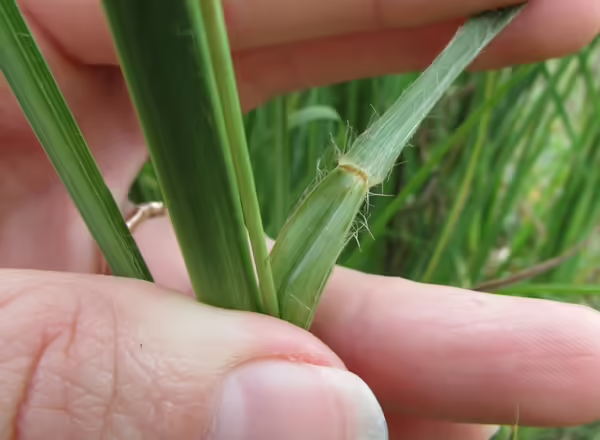
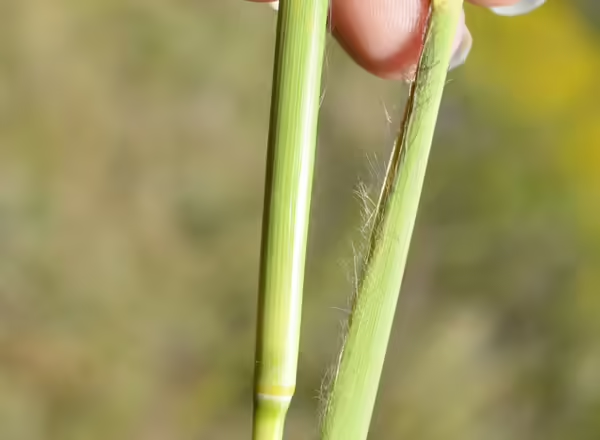
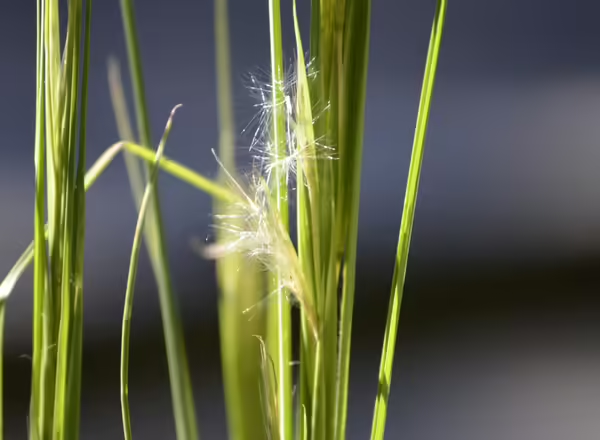
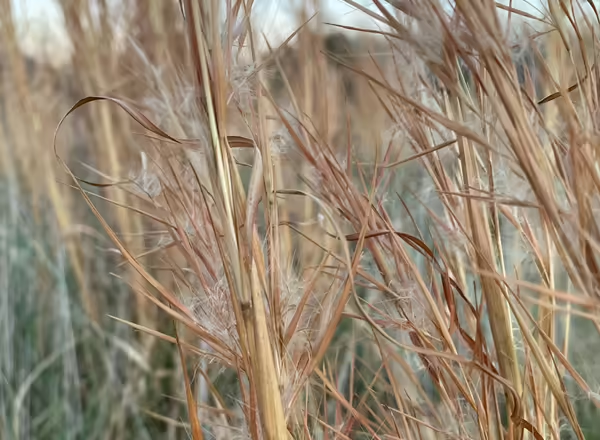
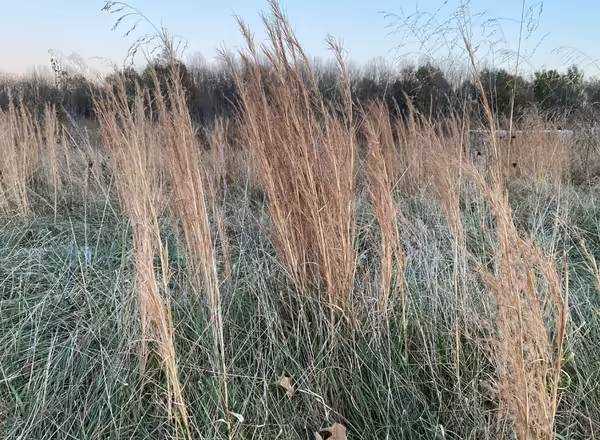
Broomsedge, Andropogon virginicus, is a native, warm season grass. This bunchgrass typically grows two to three feet tall. Broomsedge has flattened rather than round stems, and it has many leaves, resulting in a bushy appearance. This grass often, but not always, has hairy leaf blades...